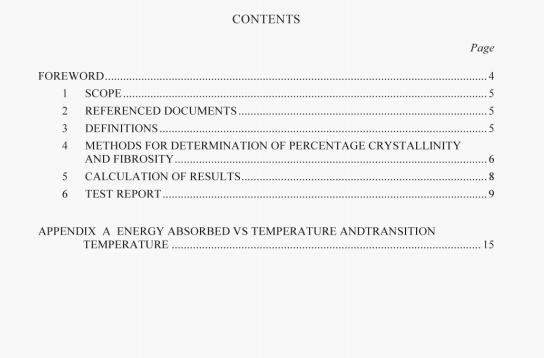AS 1544.5:2003 pdf – Methods for impact tests on metals Part 5: Assessment of fracture surface appearance of steel.
The fracture surface of the Charpy and Izod test pieces is often rated by the percentage of shear fracture that has occurred. The greater the percentage of shear fracture, the greater the notch toughness of the material. Because (lie rating is extremely subjective, it is recommended that it be not used in specification.
NOTE: The term librous-iracture appearance’ is often used as a synonym for shear-fracture appearance. The terms. cleavagc-fracture appearance’ and crystallintiy’ are often used to express the opposite of shear Iracturer. That is, zero percent shear fracture is 100 percent cleavage fracture.
4.1.2 ML’Ihod.S
As crystalline and fibrous areas of a fracture surface of the broken test piece can he distinguished visually by their appearance when viewed from several angles under a point source of light or under parallel light, the percentage of each type of fracture surface present may be determined by—
(a) direct visual estimation:
(b) direct measurement without magnification: or
(c) measurement with magnification.
NOTE: Methods (a) and (b) may not be suitable where there are several areas of crystallinity, as may occur in weld metal.
4.1.3 Accuracy
An accuracy of±10 percent crystallinity or fibrosity can be achieved with methods (a) and (b) and ±5 percent with method (c).
4.2 Procedure for direct visual estimation. The procedure shall be as folloss:
(a) Examine the fracture surface under a point source of light or tinder parallel light.
NOTES:
I An ordinary light bulb is preferable to strip lighting, and a small brilliant bulb in a reflector provides the best practical contrast. Direct natural light is also satisfactory.
2 In some metals, such as fine-grained alloy steels, the facets in the crystalline fracture face are very small with the result that the area appears dull and only of slightly lighter grey colour than the fibrous area.
In these circumstances, the area of crystallinity can best be distinguished by its dense granular texture compared with the spongy or silky texture of the fibrous area.
(b) Estimate the percentage crystallinity and percentage fibrosity by one of the following mean s:
(i) Compare the surface with fracture appearance charts as shown in Figure I.
(ii) Use prepared macrographs and Figure 2.
(iii) Compare with a reference set of control pieces for which the percentage crystallinity and percentage fibrosity have previously been accurately determined.
(c) Record the result.
AS 1544.5:2003 pdf – Methods for impact tests on metals Part 5: Assessment of fracture surface appearance of steel
